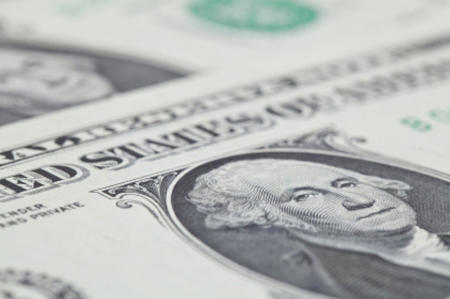The U.S. dollar experienced a marginal decline in European trading on Wednesday but maintained its position near a four-month high, with traders closely monitoring developments related to U.S. interest rates.
As of 04:55 ET (08:55 GMT), the Dollar Index, which gauges the dollar’s performance against a basket of six major currencies, edged 0.1% lower to 104.505. The index had recently reached a near five-month peak of 105.10 on the preceding day.
Speeches by Fed officials in focus
The dollar exhibited a period of consolidation on Wednesday following a series of robust economic data releases, which led traders to moderate their expectations of imminent interest rate cuts by the Federal Reserve.
Currently, traders anticipate approximately 75 basis points of rate cuts by the Federal Reserve throughout the year, aligning with the central bank’s forecasts. The commencement of an easing cycle is now fully factored in for July.
While there is additional economic data to analyze, such as the ADP private payrolls report and the ISM services index, investor focus is likely to be directed towards a multitude of central bank speakers, including Federal Reserve Chair Jerome Powell.
Powell’s recent comments regarding U.S. inflation data, stating it aligns with the Fed’s objectives, echo his dovish stance following the Fed’s policy meeting last month. This stance had previously led the markets to anticipate a rate cut in June.
Macquarie analysts advised traders earlier this week to maintain long positions in the dollar, suggesting the potential for further appreciation.
The speeches by Federal Reserve officials scheduled for this week could serve as a catalyst for additional gains in the dollar, as they may indicate that Powell’s dovish stance does not reflect the broader sentiment of the Fed’s policymakers or the FOMC median, which may lean more hawkish.
Sterling, euro edged higher
In Europe, the EUR/USD pair edged up by 0.1% to reach 1.0773, rebounding from the previous session’s over one-month low. This uptick occurred ahead of the release of the latest eurozone inflation data.
Analysts anticipate that the annual headline inflation figure will increase by 2.5% in March, down slightly from 2.6% in the previous month. Excluding volatile components, consumer prices are expected to show a 3% rise in March, easing from a 3.1% increase in the prior month.
Earlier on Wednesday, Austrian policymaker Robert Holzmann, often characterized as a hawk, suggested in an interview with Reuters that the European Central Bank (ECB) might commence interest rate cuts as early as June. This consideration arises from the possibility that inflation may decline more rapidly than initially anticipated. However, Holzmann emphasized the importance of not diverging too much from the policies of the U.S. Federal Reserve, as doing so could diminish the effectiveness of monetary easing measures.
The GBP/USD pair experienced a marginal increase to reach 1.2578, rebounding after recent declines.
Yen steadies after recent losses
USD/JPY saw a 0.1% uptick, trading at 151.69, as the Japanese yen stabilized following a partial recovery from recent losses.
Last week, the yen had reached a 34-year low against the dollar, driven by pressure from the greenback and expectations of sustained higher interest rates in the United States. However, it managed to regain some ground after several prominent Japanese officials hinted at potential currency market intervention aimed at bolstering the yen.
Meanwhile, USD/CNY climbed 0.1% to 7.2358. Despite a private survey indicating that China’s services sector expanded as anticipated in March, the yuan did not find much support from the data.
The pair remains comfortably above the crucial 7.2 level, indicating lingering caution and uncertainty among investors regarding the yuan’s outlook.
